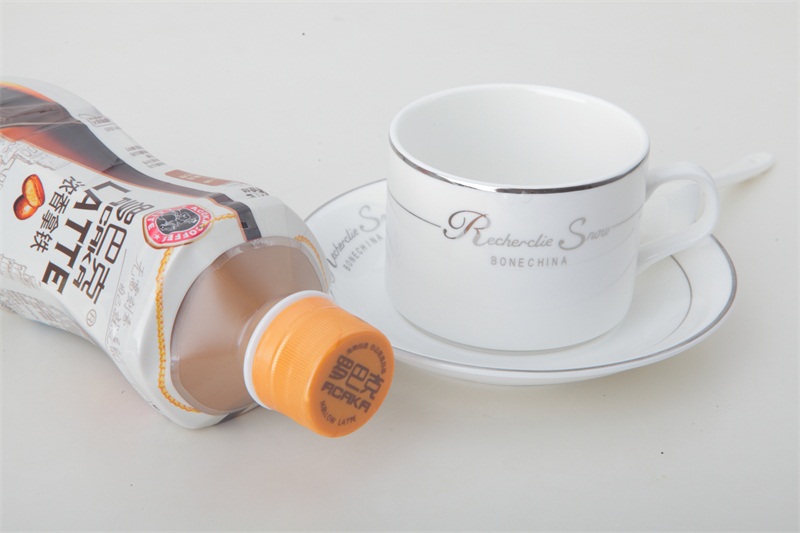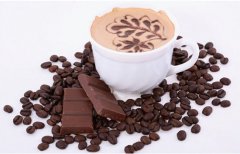Analysis and Forecast of ready-to-drink Coffee Beverage in China
In recent years, with the rapid spread of coffee culture in China, the public has a deeper understanding and understanding of coffee. Make ready-to-drink coffee beverage as a fast consumer goods industry is extremely prosperous. The major beverage agents, beverage wholesalers and beverage franchisees are eager to tap some potential coffee beverage manufacturers to expand their own sales network. Next, let's analyze the market analysis and forecast of coffee drinks in China.
I. current situation of the market
Coffee drinks are usually divided into two categories in terms of form, solid powdered coffee and liquid ready-to-drink packaged coffee (iron cans, cartons, glass bottles). This article will focus on the analysis of liquid instant coffee drinks.
Before 2003, the ready-to-drink coffee beverage market in mainland China was in the stage of enlightenment. In 1998, the sales volume of ready-to-drink coffee in the mainland was only 15000 tons, which is almost zero for a market with a population of more than one billion. However, in recent years, China's beverage market has become increasingly diversified and subdivided categories emerge in endlessly, which makes the growth rate of ready-to-drink coffee beverage market obvious. It is understood that between 2003 and 2008, China's ready-to-drink coffee market experienced a period of rapid growth, during which the overall sales of ready-to-drink coffee market reached a compound growth rate of 15%.

At present, there are only a few brands of ready-to-drink coffee in China, such as Nestl é, Roebuck Coffee, Uni-President Yaha, Brown and so on, while there are a few regional brands in Shanghai, Guangzhou, Shenzhen and Hainan. Such as Suntory, Kirin, Bond, Lishen, Moore, etc., the flavor is relatively simple, and most of them are milk coffee, and the popularity is low. The performance of Youyou Milk Cafe launched by Wa in the past two years is mediocre. Starbucks' bottled coffee ready-to-drink drink, Frappuccino, has been on the market in China since three years ago and is distributed by Pepsi, but the market is not very optimistic.
Overall, the overall business income of domestic ready-to-drink coffee beverages in 2009 is about 70 billion to 8 billion, and is expected to exceed 10 billion in the next two years. At the top of the market is Nestl é, with a conservative estimated share of 40% to 50%, followed by Roebuck Coffee, followed by Brown Coffee, and Lishen has performed well in regional markets such as Hainan, Kirin and Suntory in Shanghai. Georgia coffee, which is currently popular with Coca-Cola in Japan, is also likely to be introduced to the Chinese market in 2010.
Second, consumption characteristics and marketing countermeasures
The world drinks an average of 14000 cups of coffee per second and tens of millions of cups of coffee per hour, while China consumes less than 100 cups of coffee per person per year. According to the survey of coffee consumers conducted by domestic market survey companies, we can find that different age groups have different degrees of love for coffee, among which people who say they like coffee very much account for 24%, 24%, 21%, 30% and 18% of those who like coffee very much. Further research shows that the proportion of men who drink coffee is higher than that of women. Of all the respondents, 56% of men drank coffee and 44% of women. As a drink with unique taste, coffee is deeply loved by young consumers, and middle-aged and young people are the main consumer groups of coffee products. At the same time, the number of male consumers far exceeds that of female consumers, and most of the buyers are men. The reason is that as a hobby, coffee is more likely to be favored by men.
Coffee beverage will be one of the main products in the future beverage market, but it will take some time for the Chinese market to start. The author personally believes that the Chinese coffee beverage market will not start so fast, mainly for the following reasons:
First, it is because of consumption habits. Tea drinks are very familiar to Chinese people, and it took Kang Shifu and Uni-President three years of education market to make it enter a period of rapid development. The taste of coffee drinks is very different from that of Chinese consumers, and more time is needed to promote and promote coffee drinks. If coffee drinks have entered the market guidance period, it will take a long time to enter the product introduction period. In addition to the taste, price is also an important factor. The price of coffee drinks currently on the market is 1.5 times higher than that of tea drinks. 90% of China's coffee products are imported from abroad and need to pay import duties, while the remaining 10% of the domestically produced coffee has a low total output because of its small acreage. These factors virtually increase the market price of coffee products. In addition, there is the problem of consumer groups. At present, the consumption of coffee products is mainly concentrated in the urban market, because most of the coffee consumers are the middle class who accept western culture. At present, the middle class in China is not big enough to support an industry. Even if the domestic middle class is big enough, it remains to be seen whether it can be in line with foreign countries in terms of consumption characteristics. Tea drinks and fruit juices can blossom everywhere, while coffee drinks can be said to be very difficult to do, and it will be even more difficult to predict how long it will take.
Coffee is thought to be different from other drinks in that it lacks some functional benefits and requires more emotional and taste enjoyment. Instant coffee due to the lack of sui sense in the existing packaging, can not meet the attractive taste, no thirst-quenching function, no emotional attractiveness, has become an internal factor hindering its development.
The author personally believes that there are the following problems in the coffee beverage market: lack of a clear demand for brand positioning; taste is not attractive enough, not as pure as freshly ground coffee; packaging is not beautiful enough, there is no warm feeling and it is inconvenient to carry; few hard advertising investment and soft public relations communication, can not let people pay close attention to this category; the price is higher, health demands are more vague, and so on.
In view of the above problems, the author boldly puts forward the following marketing countermeasures:
First, make clear the brand positioning. At present, several major coffee beverage giants in the market are more homogeneous, and it is difficult to distinguish them from advertising slogans and brand positioning. When it comes to Nestle coffee, consumers may think that it is the best-selling coffee drink in the world, but there is no accurate positioning description. When it comes to unified "Yaha", the concept in consumers' minds is very vague, of course, Nestl é may feel younger and more active.
Here, Yaha can emulate the positioning and promotion means of the new generation of Pepsi and rob the younger generation of consumers. Brown, Lishen, Kirin, Suntory can also combine their own advantages to find a sales lethal brand positioning.
Second, promote coffee culture. Coffee as an imported product, for the Chinese people, after all, people who drink every day are still a minority. For the vast majority of consumers, it is not a necessity of life. The emerging consumer class (such as young white-collar workers, students) have a great interest in coffee, but they belong to the group of consumers who are more unstable, which means they will not constitute lasting spending power. The stable consumers of coffee are mainly middle-aged male intellectuals, but they have higher brand loyalty and less chance to choose new brands. In fact, for most domestic consumers, the drinking of coffee is not as a drink, but a symbol of taste to a greater extent. Therefore, aiming at the consumers of the domestic coffee market, we should patiently educate and spread the coffee culture and publicize the history and culture of coffee in order to expand the domestic market.
Third, the dissemination of public relations soft text is mainly, supplemented by hard advertising. Coffee is a cultural and emotional product, the role of hard advertising is relatively small, and the communication effect of public relations is better. Most consumers learn about Nestle coffee not through advertisements, but through numerous magazines, newspapers, networks and word-of-mouth. In addition, the target consumer group of coffee belongs to a minority group, using mass media for advertising, the input-output ratio is very low.
Fourth, enrich the product line, the price is reasonable. Coffee sales have not gone up for many years, in addition to coffee culture, lack of positioning and other factors, the high price is also a reason. Coffee is a high-end drink, and there is no possibility of a comprehensive price reduction, but we can induce the younger generation and price-sensitive consumers by enriching the product line and introducing some cost-effective packaged instant coffee. Once coffee consumption culture and psychological hobby are formed, it is believed that their sensitivity to price will decrease. In the past few years, many companies have tried to make coffee drinks in a certain area, but without success. It is not that Starbucks can go to any city where it is successful to do coffee beverage market, but it depends on whether people regard drinking coffee as a kind of taste, a kind of leisure, or as a kind of consumption habit, a kind of emotional need, the opportunity of coffee beverage industry really comes only when people's consumption characteristics reach the latter two levels.
III. Development trend and Prospect
The author infers from the data of previous years that the development of coffee beverage market in the next three years should be relatively fast, keeping at about 30%, and the domestic market capacity can break through I00/fL yuan. For food companies trying to enter the Chinese coffee market, it is not optimistic that the domestic coffee market has long been entrenched in an unshakeable giant-Nestle. According to the data provided by Nestl é to the media, the annual sales of Nestl é coffee in China is about 10 billion yuan, accounting for more than 50% of the country's total coffee sales. Nestle Coffee ranks first in China's coffee market. Nestl é also has a very positive attitude into the world's famous tea culture countries, such as the United Kingdom and Japan have developed into a huge coffee market. For China, Nestl é is ambitious to replace "tea" with "coffee" in Chinese hands. The president of Nestl é Greater China said that Nestl é had established its long-term interests in China from the very beginning, so the whole investment was gradual and kept pace with the pace of China's economic progress.
It is understood that a number of domestic food industry giants will launch coffee drinks, and many beverage companies are also making various preparations to find the opportunity to enter this market. Japanese beverage giants such as Suntory and Kirin have also stepped up their offensive against the Chinese coffee market in the past two years. Kirin uses brand extension to launch afternoon coffee and Kirin coffee series, and there will be a strong promotion plan this year. After the Spring Festival this year, Suntory has strengthened its promotion of coffee in Guangdong, and with the help of Pepsi's sales channels, Pepsi's sales company will first promote the two drinks of the Leech series, lattes and strawberries. In the future, we will consider increasing the variety, and after the breakthrough in Guangdong, we will also consider expanding sales in other areas in the future. Several major beverage giants in Japan have strong experience in coffee marketing and rich coffee product lines. They have been spying on the mainland market for a long time. Through regular analysis of economic variables and consumer psychology, once they think that the time is ripe, they will certainly seize the market share of Nestl é. Although the market leadership position of Nestl é and Uni-President Yaha will not be shaken in the next three years, it is estimated that in addition to Japanese enterprises (Suntory, Kirin) will increase their investment in coffee drinks. State-owned (Roebuck), Hong Kong (Vitar), South Korean (Rakuten) and other beverage enterprises will also come into the war. Many new brands will be listed this year and next year, and a coffee war is about to begin. The situation of "a hundred schools of thought contend" in China's ready-to-drink coffee market is coming, which will undoubtedly play a huge role in promoting the development of China's ready-to-drink coffee market.
Important Notice :
前街咖啡 FrontStreet Coffee has moved to new addredd:
FrontStreet Coffee Address: 315,Donghua East Road,GuangZhou
Tel:020 38364473
- Prev

How much do you know about coffee etiquette? Constant stirring is taboo.
Coffee drink is a kind of mood, a kind of mood, even can taste coffee as a kind of cultural flavor in life. Although it is not enough to feed and protect against the cold, it can lift your spirit, comfort your taste buds and satisfy your soul. Tasting coffee is like tasting life. After bitterness and astringency, it is full-bodied and mellow, and after haze is bright sunshine. With the popularity of coffee culture
- Next

Can individual coffee beans make the human body feel uncomfortable? Is drinking coffee a healthy habit?
Drinking coffee is actually a fastidious thing, the quality, origin and roasting skills of coffee beans are different, and the substances contained in coffee beans are different. Drink individual beans, the human body will have some adverse reactions. Most of the coffee beans in circulation on the market are Arabica beans and Robota beans. Arabica (Coffee Arabica) and Robusta (Coffe)
Related
- Detailed explanation of Jadeite planting Land in Panamanian Jadeite Manor introduction to the grading system of Jadeite competitive bidding, Red bid, Green bid and Rose Summer
- Story of Coffee planting in Brenka region of Costa Rica Stonehenge Manor anaerobic heavy honey treatment of flavor mouth
- What's on the barrel of Blue Mountain Coffee beans?
- Can American coffee also pull flowers? How to use hot American style to pull out a good-looking pattern?
- Can you make a cold extract with coffee beans? What is the right proportion for cold-extracted coffee formula?
- Indonesian PWN Gold Mandrine Coffee Origin Features Flavor How to Chong? Mandolin coffee is American.
- A brief introduction to the flavor characteristics of Brazilian yellow bourbon coffee beans
- What is the effect of different water quality on the flavor of cold-extracted coffee? What kind of water is best for brewing coffee?
- Why do you think of Rose Summer whenever you mention Panamanian coffee?
- Introduction to the characteristics of authentic blue mountain coffee bean producing areas? What is the CIB Coffee Authority in Jamaica?

